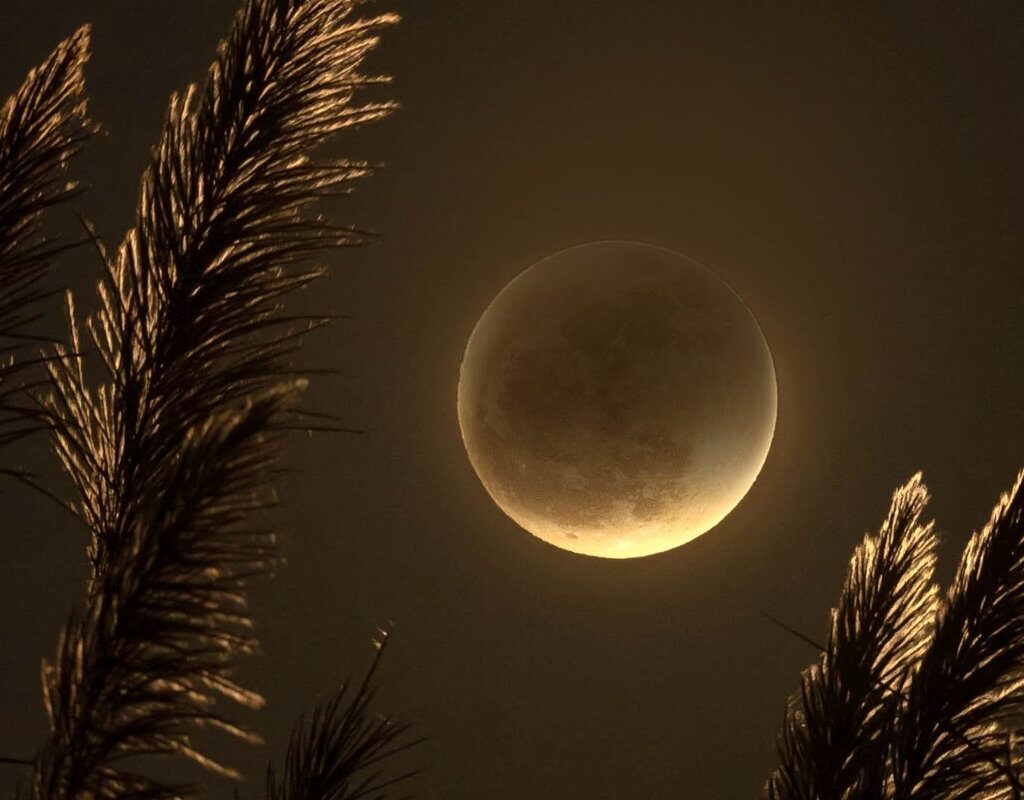The penumbral lunar eclipse of May 25, 2013, was a unique event due to its subtlety and astronomical significance. Barely noticeable to the naked eye, this phenomenon coincided with the beginning of Saros 150, a cycle of eclipses that will continue to unfold over centuries.
Lunar Eclipses: May 25, 2013
On May 25, 2013, a penumbral lunar eclipse took place, generating significant interest among scientists, amateur astronomers, and astrology enthusiasts. This event was particularly notable for its subtlety, as the Moon barely grazed Earth’s penumbra, making it difficult to observe. However, this slight interaction of cosmic shadows left a profound message within the astronomical community and sparked diverse spiritual reflections.
Low Visibility and Observation Areas
First and foremost, it is worth noting that the phenomenon was almost unobservable to the naked eye.
The lunar transit through the penumbra was so faint that only regions like Africa and some parts of the Americas detected a slight darkening on the lunar edge. Meanwhile, in Spain, the Canary Islands offered the most favorable conditions to observe the penumbra.
According to astronomical calculations, the first contact occurred around 03:53, reached its peak at 04:09, and concluded at approximately 04:26. Similarly, in Venezuela, it occurred during the night of May 24 at 11:41 p.m., adjusted to the local time zone.
It is pertinent to frame this event within the context of different types of lunar eclipses.
A total eclipse covers the Moon’s entire visible surface with Earth’s shadow; a partial eclipse covers only a portion of the Moon, and, in contrast, a penumbral eclipse happens when the Moon crosses only Earth’s penumbra, causing a faint darkening.
There are also rare phenomena like the selenelion, during which the Sun and eclipsed Moon can be seen simultaneously on the horizon, typically coinciding with sunrise or sunset.
Saros 150 and Its Significance
Additionally, this eclipse marked the beginning of Saros 150, a cycle of repeating eclipses that spans 19 years and includes 38 eclipse seasons within that period.
Typically, each season produces two or three eclipses, encompassing both solar and lunar eclipses. On average, a complete Saros cycle includes 42 solar eclipses (14 partial and 28 central) and 42 lunar eclipses (14 penumbral, 14 partial, and 14 total). While we are currently in a phase where some Saros cycles present fewer eclipses than average, over time, these sequences evolve, and after approximately 600 years, they may exceed the historical average.
Meanwhile, this phenomenon coincided with the Moon in Sagittarius and the Sun in Gemini, creating a scenario of mental duality and deep questioning.
On one hand, Gemini governs the concrete mind and how we acquire knowledge; on the other hand, Sagittarius embodies the abstract mind and expansive creativity. Consequently, this alignment emphasized the need for balance, nurturing both intellectual curiosity and the search for higher purposes.
Additionally, the eclipse occurred near the Full Moon of Humanity, a moment celebrated in various spiritual traditions as a time for goodwill and planetary harmony. Many esoteric schools believe that the energy during this event fosters profound internal changes and nurtures transformative visions for those participating in these observances.
Conclusion: Future Perspectives on Eclipses
Over the coming centuries, the trajectories of Earth and the Moon will continue to change enough to alter certain details in the sequence of eclipses. Nevertheless, the beauty and anticipation evoked by these events will remain unchanged.
Moreover, the Saros cycle will continue to serve as a crucial reference for predicting eclipses and planning observations more accurately, bridging scientific research with the wonder of curious minds around the world.
Ultimately, the penumbral lunar eclipse of May 25, 2013, left a legacy of significant lessons. On one hand, it highlighted the delicate nature of the penumbra, capable of going unnoticed by most observers.
On the other hand, it inaugurated a new cycle within the Saros 150 framework, offering opportunities for study, reflection, and dialogue between science and spirituality. In this way, the powerful influence of astronomical events in unifying seemingly opposing visions is emphasized, symbolizing the essential convergence between our earthly curiosity and the majesty of the universe.
Mike Rivero — Lunar Eclipses





